Papua New Guinea is as culturally diverse as it gets. The remote nation that sits in the Pacific Ocean north of Australia is home to over 800 recorded distinct tribal groups that speak at least 750 different languages. Despite the fascinating elements of this civilization, PNG receives very few tourists a year. According to the PNG Tourism Promotion Authority, 2018 saw 94,627 tourists, with only nine percent from North America. For those who want to experience unique customs and traditions, well off the tourist trail, here are seven ways to respectfully immerse in the local culture and gain some understanding of the ways of life in Papua New Guinea.
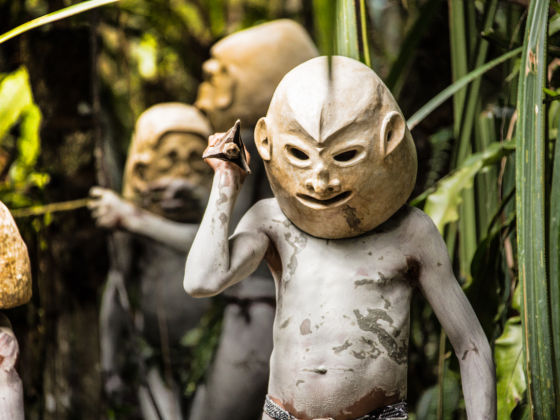
7 Ways to Learn About Tribal Culture in Papua New Guinea
1. Get to know the Papua New Guinean kina.
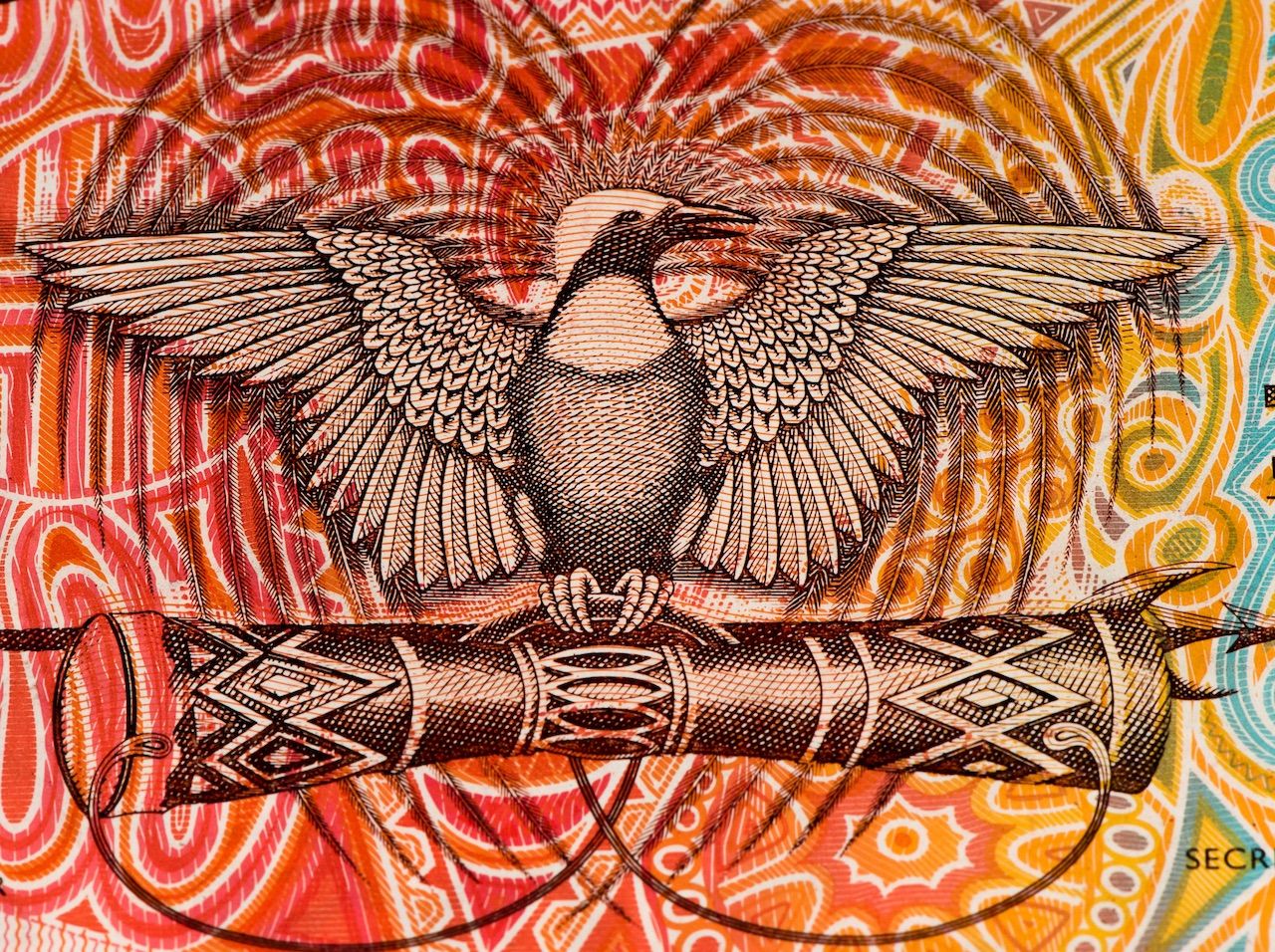
Photo: Anton_Ivanov/Shutterstock
Papua New Guinea has had its own banknotes, called kina, and coins, called toea, since its independence in 1975. The traditional money of valuable kina and toea shells inspired the name of the modern national currency. Kina callable pearl shells and toea shells were once used throughout the nation to exchange for goods that a community couldn’t cultivate on its own and for dowries. Tabu shells and pig tusks were also used as traditional monies. The Tolai people of the province of East New Britain still use shells as money, Vice reported earlier this year.
The design of the currency pays tribute to the cultural heritage of PNG. All of the banknotes (K2, K5, K10, K20, K50, and K100) feature the national crest, a bird of paradise sitting on a drum and spear, as well as depictions of traditional everyday items such as shells and tools, ceremonial artifacts like masks and headdresses, and wildlife like boars. The coins (t1, t2, t10, t20, and t50) also display the national crest while the reverse sides feature wildlife such as crocodiles, butterflies, turtles, etc.
To learn more about Papua New Guinea’s beautiful currency and get a glimpse into the culture of the country even before you board your flight, check out the website of the Bank of Papua New Guinea.
2. Be introduced to PNG’s rich culture at the National Museum and Art Gallery.

Photo: PNG National Museum & Art Gallery/Facebook
Flights on Air Niugini, PNG’s national airline, arrive in Port Moresby at the international airport and often don’t connect to regional destinations until the following day. You’ll have just enough time to get acquainted with PNG by heading to the phenomenal National Museum and Art Gallery (NMAG). Since 1977, NMAG has been showcasing artifacts from 19 of the 21 provinces of the country and preserving PNG’s cultural heritage, including the kina shells that were once widely used as currency.
The Tumbuna Gallery is where you’ll find cultural and religious objects from around the country and across many generations. Ancestral masks, totem poles, clothing, headdresses, jewelry, baskets, musical instruments, and more from various tribes are on display with signs that explain their importance, meaning, and use.
The Ian Saem Majnep Gallery is named after a pioneer Papua New Guinean scientist and is dedicated to archaeological finds from the highlands, such as stone axes, pieces of pottery, and various materials dating back as far as 50,000 years.
3. Visit traditional villages.
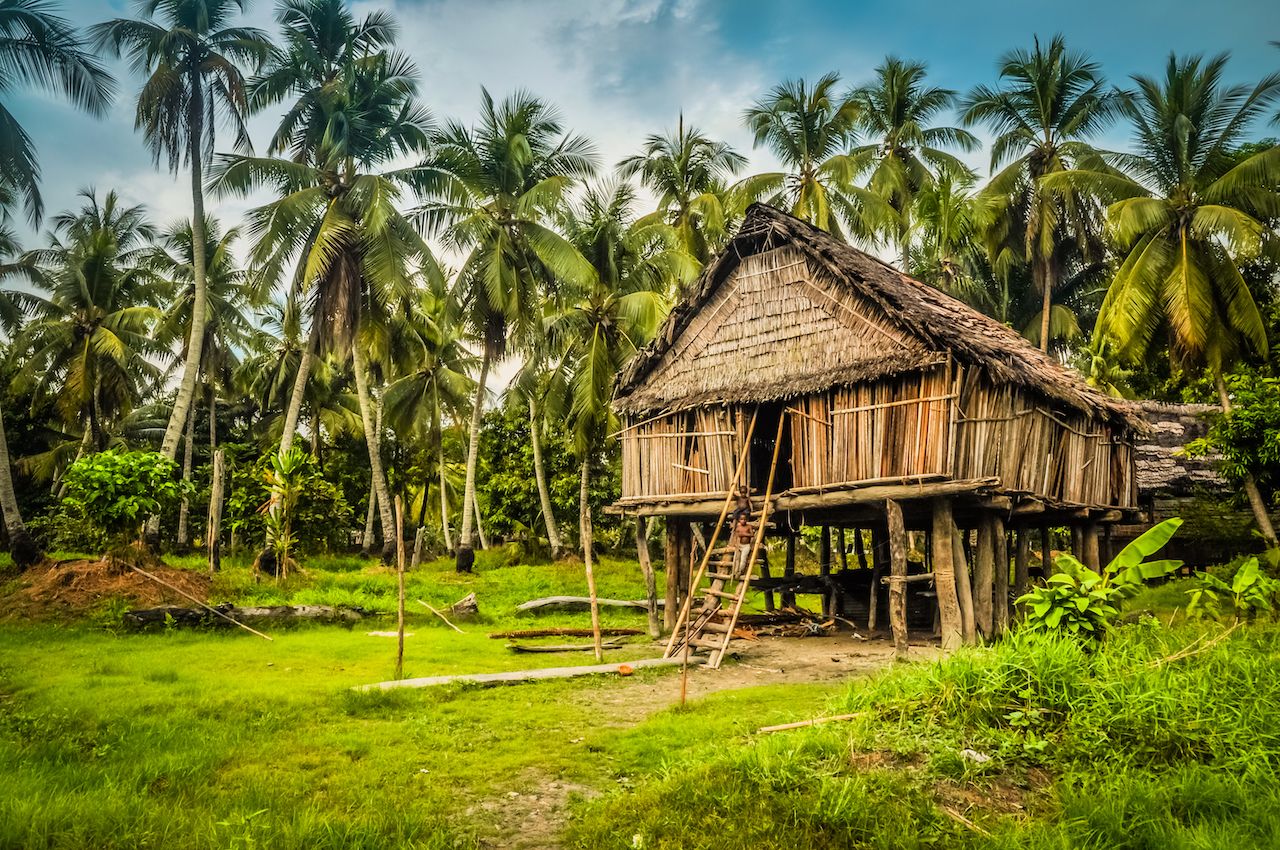
Photo: Michal Knitl/Shutterstock
The people of Papua New Guinea have tapped into ethical tourism by inviting foreigners to visit their villages, share their way of life, and taste their food.
In partnership with Karawari Lodge, villagers along the Karawari River have set up community-based tourism experiences that help them earn an income to support their families and also preserve their culture by showing younger members of their communities that their ways of living are fascinating and of value to the outside world.
To reach Karawari, guests must travel by private charter plane. Once in the area, they board a boat that sails along the river and stops to visit various tribal groups. From the people of the Karawari, visitors learn the time-honored way of how a sago tree is harvested and transformed into a starchy food that provides subsistence for locals, observe ceremonial dances and celebrations, and visit traditional homes.
“Through the demonstrations, villages learn about providing tourism offerings and sustainable tourism. The resorts know how to work with the villages to help their economy as opposed to disrupting it while providing opportunities in terms of employment,” says Erin Mullaney, who represents the Tourism Promotion Authority at Myriad Marketing.
Other areas that welcome visitors include various villages in Mount Hagen where the Melpa people live, including the Asaro Mud Men, who put on captivating demonstrations of how they used to frighten their enemies clad in masks and white paint. Trips to the Hela province takes guests to meet the Huli people, one of the largest cultural groups in the country and one whose customs you won’t experience anywhere else. Trans Niugini Tours organizes tours to these areas of the country.
4. Stay in a guesthouse for a true cultural immersion.

Photo: Tufi Resort Papua New Guinea/Facebook
Many of the villages that are open to outside visitors have created guesthouse programs to continue to funnel tourism dollars into their communities and allow tourists to experience their traditional lifestyles.
Tufi in the Oro Province was the first area to open village guesthouses to visitors. The guesthouse programs are organized by partner hotel Tufi Dive Resort. Each guest house is built with traditional bush materials and is regulated by the Tourism Promotion Agency to meet set standards, including bedrooms with mattresses, pillows, and sheets; a dining area; a shower room; and a pit toilet.
The village stay is the most in-depth cultural experience you can have in PNG. You’ll live like the locals, among the locals, and partake in daily activities such as building traditional homes and canoes from sago palms, fishing, making ropes for hunting, foraging for food, and preparing meals of bush meat such as bats.
Depending on the location of your host family, you’ll be offered diverse experiences such as jungle treks, visits to ancient skull caves, watching for birds of paradise and hornbills, traditional crafts making, witnessing face and body tattooing, etc.
Kofure Village is just a quick canoe ride from the PNG Air dirt airstrip at Tufi and has been hosting visitors for nearly 50 years. Here you’ll be able to see a demonstration of how women from the Maisin tribe make tapa cloth from trees that are traditionally worn as skirts.
5. Attend a sing-sing.

Photo: isaxar/Shutterstock
If you want to witness more than the day-to-day life of the people of Papua New Guinea, go check out a sing-sing. The event, which is a gathering of tribe members in traditional dress performing their ancestral dances and songs, is a deep dive into PNG’s tribal culture.
Sing-sings in Papua New Guinea are held from July to November, and tourists are encouraged to attend. The highly sought-after Mount Hagen (August) and Goroka (September) shows, where hundreds of tribes meet in the Highlands region, tend to sell out a year in advance. The lesser-known ones, like those that take place during the Madang (September) and Kenu & Kundu (November) festivals, are equally fascinating and much more intimate.
“The festivals were initially performed by different tribes who gather to compete and show off their costumes, paintings, sing-sing, and dance to see who had the best. Today, these activities still continue and are seen as a pull factor for cultural tourism. One way of continuing the tradition is by involving young adults and children as early as three years old, whereby the parents dress the kids in traditional attire and allow them to join the sing-sing and dance. The shows were never meant for tourists but for locals. The sing-sings have not changed over the years,” said Pamela Hoepel-Aupae, Marketing Officer at PNG Tourism Promotion Authority.
6. Go birdwatching in search of the most important animal in the country.
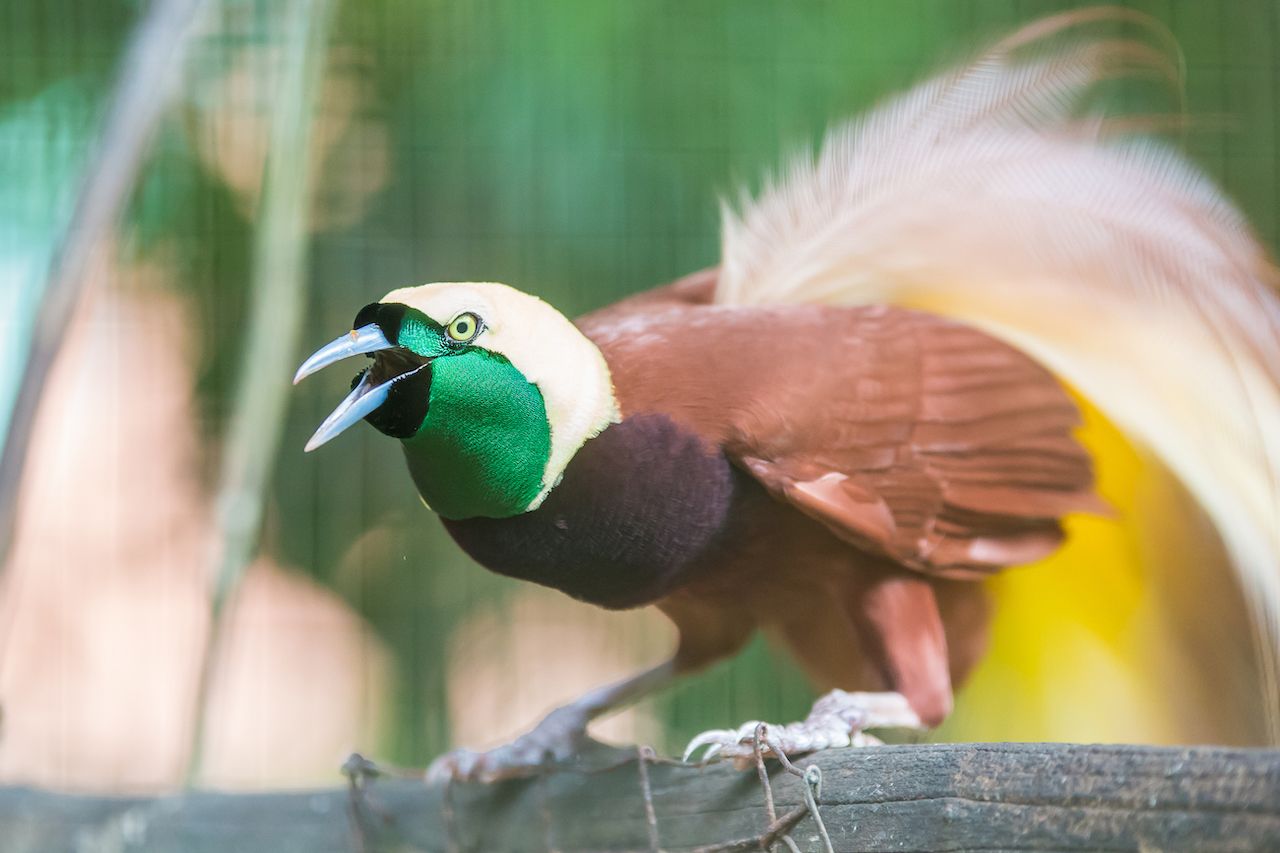
Photo: Yusnizam Yusof/Shutterstock
PNG has a bird population of over 760 species, half of which can only be found in this part of the world. So, if you’re into birding, clearly this is the spot to hit.
The bird of paradise, of which there are 40 species in PNG, is the emblem of the country; it is featured on the currency, on the flag, and on the national crest. The feathers of birds of paradise are extensively used by tribes in ceremonial garments and decorations, although tribe members understand the threat under which the birds are because of hunting and loss of habitat, so they mostly recycle the vibrant feathers and pass them down to family members to reuse in order to help preserve species.
There are many birdwatching tours available to visitors, but we recommend the eco-conscious Rondon Ridge in the Western Highlands province. Bird watchers stay in a lodge located in the rainforest, home to 180 species of birds, including many birds of paradise. Early morning on-site birdwatching tours are organized for guests. Visit from June to October for the best birdwatching conditions.
7. Visit the Port Moresby Nature Park for a quick cultural lesson.
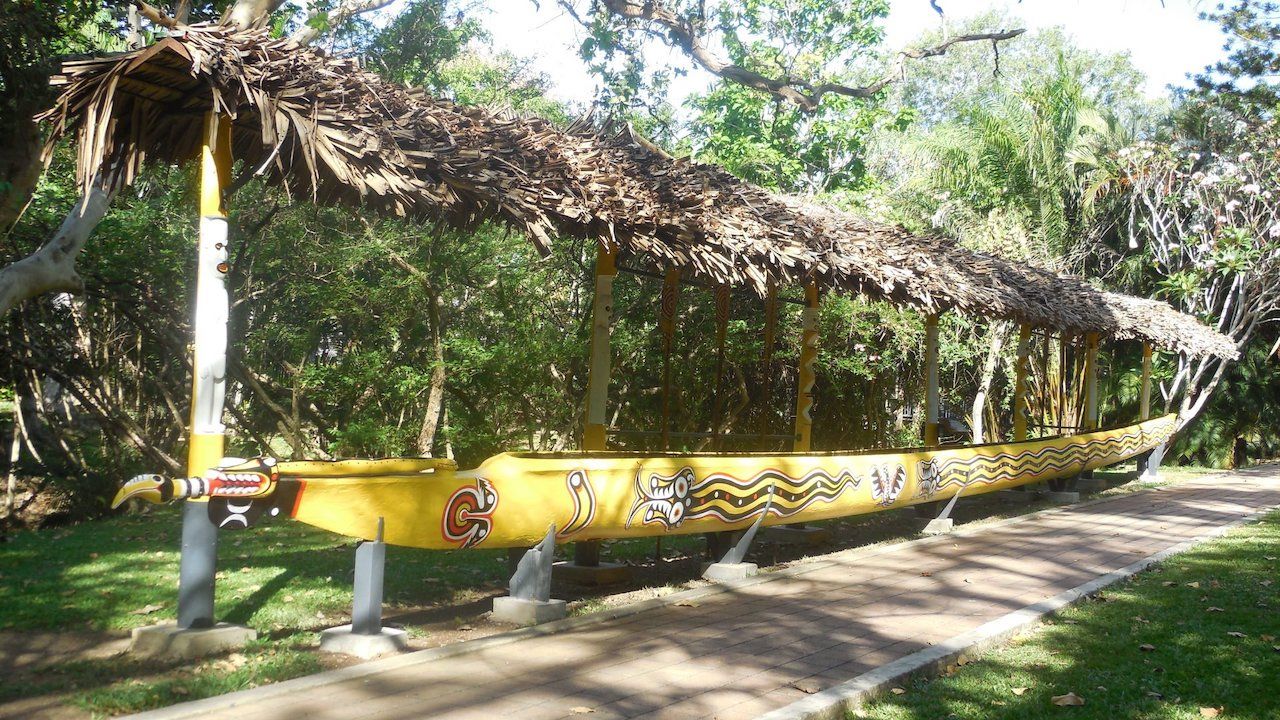
Photo: Port Moresby Nature Park
All adventures around PNG include stopovers in Port Moresby between trips from the coast to the highlands. You’ll often have at least half a day in the city, so make the best of it and visit Port Moresby Nature Park. If you didn’t have time to really immerse in indigenous culture during your trip around Papua New Guinea, you can still learn a lot about the heritage at the multi-award winning recreational park.
Cultural elements pertaining to several of the country’s many tribes are weaved throughout the park. There’s a Trobriand Island yam house, a structure found in the center of the villages of the Trobriander people, who live on the four islands in Milne Bay Province; a Gogodala war canoe, a 130-foot war boat traditional of the Western province that is ornately decorated; carved totem poles from the Sepik region; and Kulepteina nests, used for a dance traditional of the New Ireland province during which a performer perches in a nest built atop tall poles.